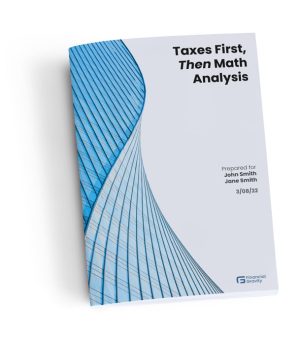Debit Cash, Credit Reverse Tax Gap = Missed Opportunity
We know that many Americans overpay their tax obligations. Often this is the result of simple mathematical error. Another major cause is a misunderstanding, and a misapplication, of the tax laws. This overpayment is called the reverse tax gap.
The “tax gap” is an accounting term of art that refers to the shortfall of timely collections of estimated taxes due, also known as the “tax liability.” Over the past several years, and after the IRS’s efforts to collect the unpaid taxes, the gap has been about 13%, or nearly one-half billion dollars per year.
No ethical and qualified tax professional would choose to be associated with underpayment or overpayment of tax. However, tax pros can only work with the information they are given; they rely on their clients to provide them all appropriate tax-related documentation and disclosures.
The reverse tax gap, or overpayment, of tax liabilities often occurs because a disconnect exists between the tax pro and their client’s other advisors. For example, the client provides a W-2 form listing the amount of contributions to qualified retirement plan accounts, but the tax pro cannot know if the ideal type of account has been set up, or the ideal amount of contributions to each type have been made. That would require a deeper, strategic examination of the client’s financial situation and objectives.
Similarly, the tax pro filing a business return for a dentist who owns their own practice can know the total salaries paid to employees, but if the dentist missed an opportunity to hire their spouse or child as an employee, income deferral and retirement account contributions may have been missed. Taxes were not overpaid in the literal sense but may well have been in practical terms. The reverse tax gap, when caused by a failure to take advantage of legal tax avoidance practices, is nearly impossible to calculate on a national level but can be well understood at the individual and family level.
In this example, the dentist seeking to build a more profitable practice has two very different ways to make that happen. They can aggressively solicit new patients, work longer hours and amplify their existing business model. That’s an offensive approach. Alternatively, they could work with a tax strategist to keep or gainfully employ a greater portion of their practice’s total revenues.
The first approach will require an investment in both time and money. They could, for example, send attractive direct mail pieces to select census tracts, spend money on signage for their offices, develop their websites, and run FaceBook campaigns.
The second method, work with their strategic tax professional, would likely involve two or possibly three conversations to review the dentist’s personal and business situation in depth. If there are things that can be restructured to allow the dentist to keep more of their revenues or achieve a better after-tax return on their investments, those benefits will likely recur every year until they retire.
When that dentist sells their business, they’ll likely receive a higher valuation based on years of higher profitability. The return on tax strategy can be a multiple of what investments in new revenues might be. Based on our observations, unless that dentist, or other business owner, is already working with a strategic tax expert, it’s very likely there will be legal, ethical tax avoidance techniques that can save them money.
The business owner who sees taxes as an expense item that can be managed would be wise to seek professional guidance, just as they would when making a decision about new plant and equipment, real estate, or marketing initiatives. Tax planning is a business decision and one that can have a massive impact on the bottom line.










